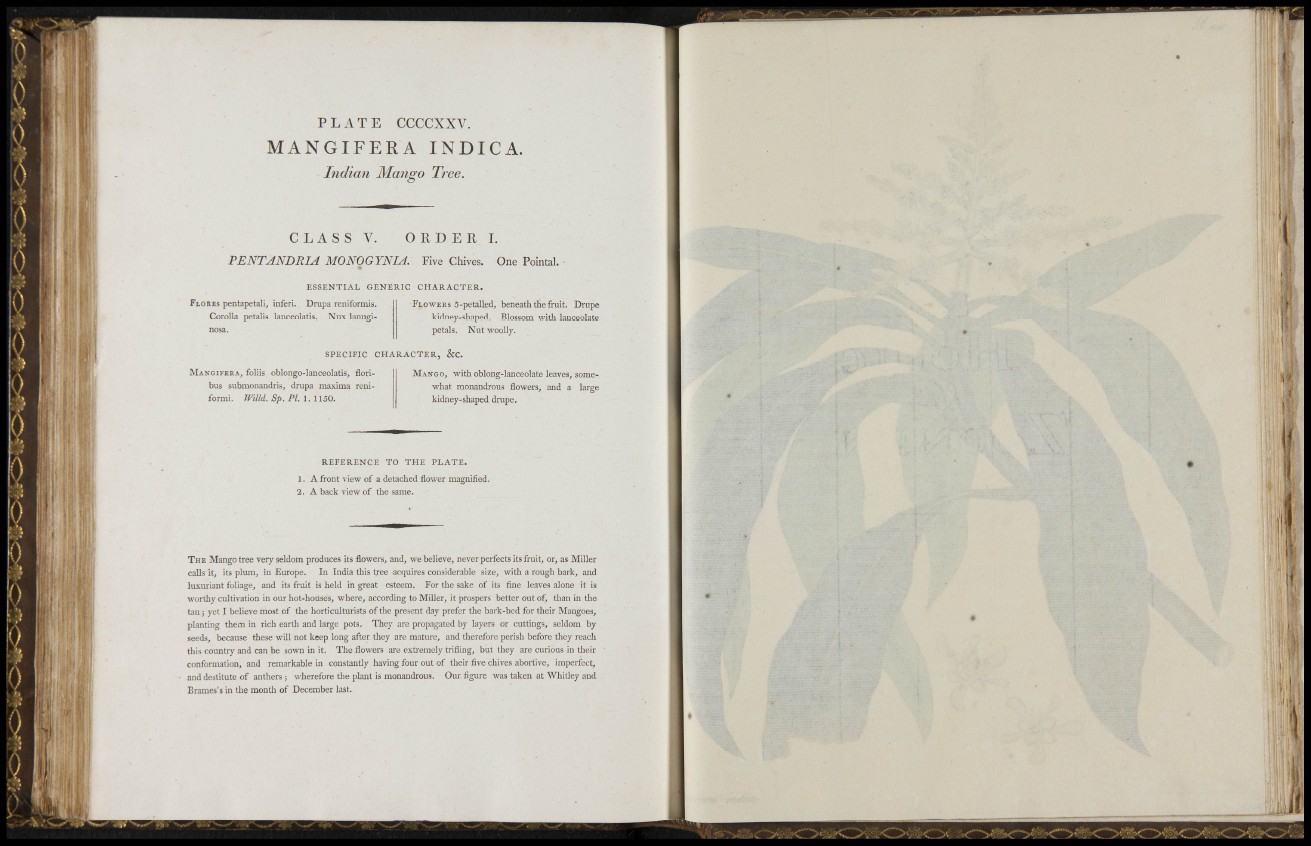
f IV
P L A T E CCCCXXV.
M A N G I F E R A INDICA.
Indian Mango Tree.
a m i
C L A S S V. ORDER I.
PENTANDRIA MONOGYNIA. Five Chives. One Pointal.
L'i ' It I > K J
ESSENTIAL GENERIC CHARACTER.
FLORES pentapetali, inferi. Drupa reniformis.
Corolla petalis lanceolatis. Nux lanuginosa.
FLOWERS 5-petalled, beneatli the fruit. Drupe
kidney-shaped. Blossom witli lanceolate
petals. Nut woolly.
SPECIFIC CHARACTER, &C.
MangifeeAJ foliis oblongo-lanceolatiSj fioribus
submonandris, drupa maxima reniformi
. mild. Sp. PI. 1.1150.
MANGO, with oblong-lanceolate leaves, somewhat
monandrous flowers, and a large
kidney-shaped drupe.
• t-.
- S\
f.v
V .
REFERENCE TO THE PLATE.
1. A front view of a detached flower magnified.
2. A back view of the same.
' 1
'JS
l i i n ^
THE Mango tree very seldom produces its flowers, and, we believe, never perfects its fruit, or, as Miller
calls it, its plum, in Europe. In India this tree acquires considerable size, with a rough bark, and
luxuriant foliage, and its fruit is held in great esteem. For the sake of its fine leaves alone it is
worthy cultivation in our hot-houses, where, according to Miller, it prospers better out of, than in tlie
tan ; yet I believe most of the horticulturists of the present day prefer the bark-bed for their Mangoes,
planting them in rich earth and large pots. They are propagated by layers or cuttings, seldom by
seeds, because these will not keep long after they are mature, and tlierefore perish before they reach
this country and can be sown in it. The flowers are exti-emely trifling, but they are curious in tlieir
conformation, and remarkable in constantly having four out of their five chives abortive, imperfect,
and destitute of anthers; wherefore the plant is monandrous. Our figure was taken at Whitley and
Brames's in the month of December last.